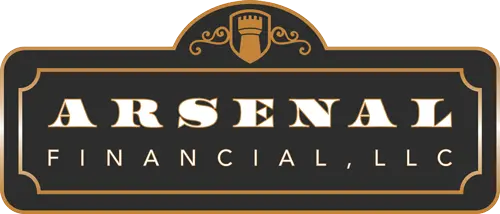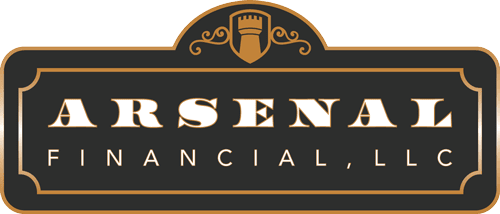It’s back-to-school season, and regardless of your age, the beginning of fall marks the tying up of loose ends of summer and getting back down to business. If you’re a business owner, you might be preparing for more consistent business now that people have — both physically and mentally — returned from their summer vacations. And if you’re a parent, you’re preparing for a new year of after school activities, playdates, and PTA meetings. Regardless, “back-to-school” season represents much more than another year of learning: it means a return to discipline and routine, whether that’s jumping back on your diet and fitness program, refocusing on your business, or setting new financial goals.
If you’re looking to refocus and realign your finances this fall, we’ve got a list of things to keep top of mind this season. Here’s your fall financial wellbeing checklist:
1. Plan ahead of any major life events you’re anticipating
Now is the best time to look ahead to the next 12 to 24 months. Do you have any major life events coming up? Planning ahead for major financial goals can help set you on the right track and help put your best foot forward.
For example, if you’re planning a big European vacation for the whole family in two years, it’s time to start thinking about planning and saving for it now. After all, it will be much easier to gradually save for your big financial goals, instead of thinking about them just a few months in advance — and then finding yourself unprepared mentally and financially.
2. Make sure you’re protected
If you haven’t reviewed your life insurance, disability, or long-term care policies lately, consider this a sign to review them! Most people will purchase these policies and let them sit, willfully ignored, until they are needed. But what if your circumstances have changed? What if your dependents have changed?
Take some time to review the following insurance policies:
- Life insurance
- Disability insurance
- Long-term care
- Home insurance
- Auto insurance
- Any umbrella insurance plans
It’s not always easy to tackle your complete insurance strategy, but it’s an important part of your financial checklist, especially if your circumstances have changed.
3. Review your beneficiary designations
When’s the last time you checked your beneficiary designations? Beneficiary designations on 401k accounts, bank accounts, non-retirement investments, and IRA accounts (among others) are a classic “set it and forget it” situation. Most people don’t double check their beneficiary designations, or may even forget to assign them in the first place. We see it all the time!
But what if things have changed? What if you now have a grandchild you want to designate as a beneficiary, but you keep forgetting? Set aside time to tackle this small but meaningful task.
4. Check on your open enrollment
Another sign of fall: open enrollment! Make sure to check in with your employer or your employer’s provider to make any changes regarding employer sponsored benefits, such as health, dental, disability, life insurance, and others ranging from legal services to pet insurance! Some benefits are paid in full by the employer, for some the cost is shared between you and the employer and others are paid for entirely by the employee with salary deductions. The decisions surrounding open enrollment should be made in consideration of your financial and life goals — that means checking all the fine print on your benefit selections and ensuring it matches you and your family’s needs.
5. Review Flexible Spending Account (FSA) balances
If you have a Flexible Spending Account (FSA) as an employer-sponsored benefit, consider checking in on the account. Oftentimes, families have unspent money on their accounts – and that’s lost to you, unless you take advantage of it by the year’s end. Make a concrete plan for how you plan to use the money by the end of the year.
6. Double down on your employer-sponsored retirement plan
Families using an employer-sponsored retirement plan need to double check on their contributions. Have you maxed out your employer-sponsored retirement plans? Are you contributing the maximum amount to your retirement plan?
If you can afford to max out your employer-matched contributions, based on annual contribution limits, it’s in your best interest to do so. If maxing out isn’t a possibility for you now, consider contributing at least the amount of money to capture your employer’s match. That way, you’re receiving the full company contribution you’re entitled to.
7. Review & Rebalance your portfolio
After another year of stock market gains, it’s time to rebalance and review your investment portfolio. Consider the following questions:
- How have your stocks performed the past several months?
- How have your stocks performed relative to your bonds, or fixed income investments?
- Consider expectations of future performance
- Consider future financial goals
Review your portfolio for tax losses (or tax gains) that you want to realize in this tax year. Don’t wait until the last minute!
At the end of the day, there’s no better time than now to rebalance your portfolio, so you’re well-positioned to enter the new year on a strong note.
8. Take any remaining Required Minimum Distributions (RMDs) to avoid steep penalties
If you’ve reached retirement age, you know all about the required minimum distributions (RMDs). The concept is simple: you can’t keep retirement funds in your accounts without paying taxes. When you reach a certain age, you need to start taking withdrawals out of select tax-deferred accounts and pay the taxes due on them – or risk some steep penalties.
In 2020, changes were made by the SECURE Act. What does that mean for you? According to the IRA, if your 70th birthday is July 1, 2019 or later, you do not have to take withdrawals until you reach age 72. Roth IRAs do not require withdrawals until after the death of the owner.
Any withdrawals will be included in your taxable income, except for any part that was taxed before or that can be received tax-free.
This fall, consider taking out any remaining RMDs to avoid those penalties and keep that peace of mind. Better yet, create a systematic withdrawal plan so that it’s automated for you.
9. Check on charitable giving
Before the year ends, consider any charitable giving. Some people don’t take advantage of charitable giving, but these contributions (financial or physical) to tax-exempt organizations can reduce your taxable income.
If you plan on charitable giving, consider the fine print. In most cases, you can deduct up to 60% of your adjusted gross income through charity donations – or 100%, if the gifts are in cash. However, you may be limited depending on the type of contribution and the organization.
That being said, if you plan on charitable giving, speak with a financial planner (like us!) and we can help maximize the benefits.
Fall is always a great time to ‘get back to work’ and that can include reviewing your financial plan. Whether that entails checking back in on your protection strategy, reviewing your portfolio or taking another look at your goals and modifying your plan accordingly, setting yourself up in autumn allows you to enter the new year with a renewed perspective. Feeling overwhelmed by this list? Let’s have a conversation!
Disclaimer: Content in this material is for general information only and not intended to provide specific advice or recommendations for any individual. All performance referenced is historical and is no guarantee of future results. All indices are unmanaged and may not be invested into directly.
LPL Financial does not provide tax advice. Clients should consult with their personal tax advisors regarding the tax consequences of investing.
Contributions to a traditional IRA may be tax deductible in the contribution year, with current income tax due at withdrawal. Withdrawals prior to age 59 ½ may result in a 10% IRS penalty tax in addition to current income tax.
Rebalancing a portfolio may cause investors to incur tax liabilities and/or transaction costs and does not assure a profit or protect against a loss.

